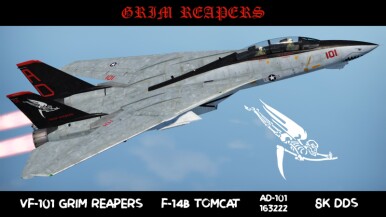
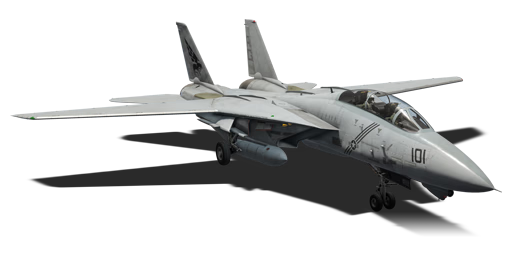


Even before the F-14 had its first test flight, Grumman knew the F-14A's performance would be underwhelming due to its TF-30 engines. This, as well as the VAX-2 specification sent out by the US Navy during the 1980s, led to the F-14B. The F-14B was a huge improvement over the F-14A in almost every aspect. New avionics, systems, engines, and much more were done on the F-14B. One of the upgrades included the addition of the AN/AXX-1 Television Camera System (TCS), for IFF purposes. The F-14B's main upgrade were the engines: General Electric F110-GE-400s replaced the TF-30s and massively improved the performance in essentially every aspect. The range, top speed, and turn rate were significantly improved, which meant the F-14B was far more suitable for carrier operations than the F-14A.
Introduced in Update "La Royale", the F-14B is an extremely capable aircraft. The F-14B is essentially a heavily upgraded F-14A. With new engines, avionics, and weapons, the F-14B is a much more potent aircraft. It gets access to AIM-9L Sidewinders, AIM-7M Sparrows, and AIM-54C Phoenixes, which is a big improvement over the F-14A's armament. Furthermore, the General Electric engines make the F-14B far more competent in dogfights compared to the F-14A. The F-14B is also more capable for ground attack thanks to the addition of the Paveway II guided bomb.
flaps
flaps
flaps
brake
| Belt | Belt filling | Armor penetration (mm) at a distance: | |||||
|---|---|---|---|---|---|---|---|
| 10 m | 100 m | 500 m | 1000 m | 1500 m | 2000 m | ||
| HEF-I/API-T/AP-I | 40 | 36 | 22 | 12 | 6 | 3 | |
| HEF-I/HEF-I/API-T/HEF-I/HEF-I/AP-I | 40 | 36 | 22 | 12 | 6 | 3 | |
| API-T/AP-I/AP-I/AP-I/HEF-I | 40 | 36 | 22 | 12 | 6 | 3 | |
| HEF-I/AP-I/AP-I | 40 | 36 | 22 | 12 | 6 | 3 | |
| Name | Weight | Slot | ||||||||
|---|---|---|---|---|---|---|---|---|---|---|
| 84.5 kg |  |  |  |  | ||||||
| 160 × Сountermeasures | 39.4 kg |  |  |  |  | |||||
| 160 × Сountermeasures | 123.9 kg |  |  |  |  | |||||
| 231.3 kg | 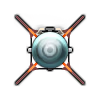 |  |  | |||||||
| 443.6 kg |  |  | ||||||||
| 463 kg | 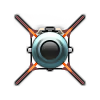 |  | ||||||||
| 8 × | 560.6 kg |  |  | |||||||
| Drop tank (280 gal.) | 90.7 kg |  |  | |||||||
| 2 × | 462.7 kg | 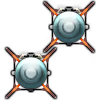 |  | |||||||
| 2 × | 887.2 kg | 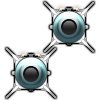 |  | |||||||
| 2 × | 926 kg | 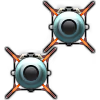 |  | |||||||
| 6 × | 1,445.4 kg |  | ||||||||
| 2 × | 893.6 kg | 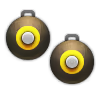 |  | |||||||
| 2 × | 1,787.2 kg | 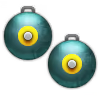 |  | |||||||
| 2 × | 506.2 kg | 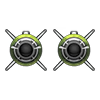 |  | |||||||
| 2 × | 1,787.2 kg | 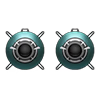 |  | |||||||
| 2 × | 1,787.2 kg |  |  | |||||||
| 2 × | 554.3 kg |  |  | |||||||
| 2 × | 990.6 kg | 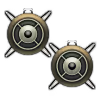 |  | |||||||
| 6 × | 1,445.4 kg |  | ||||||||
| 2 × | 893.6 kg |  |  | |||||||
| 1,079.6 kg | 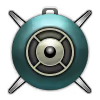 |  | ||||||||
| 8 × | 1,927.2 kg | 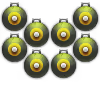 | ||||||||
| 2 × | 1,887.9 kg | 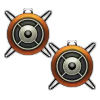 | ||||||||
| 8 × | 1,927.2 kg |  | ||||||||
| LANTIRN targeting pod | 211.5 kg |  | ||||||||












Flight performance |
|---|
Survivability |
|---|
Weaponry | ||||
|---|---|---|---|---|
